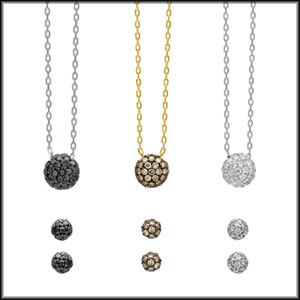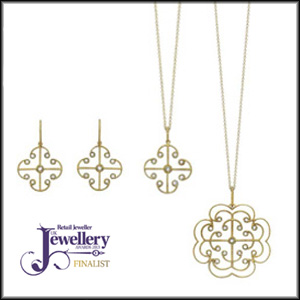Diamonds
The cut of a precious stone dramatically changes its appearance. Many precious stones are dull and of little interest when freshly mined.
 Diamonds
Diamonds
The cut of a precious stone dramatically changes its appearance. Many precious stones are dull and of little interest when freshly mined.
When mined, the diamond looks most unremarkable with dull and battered external surfaces, similar in appearance to a pebble. However when cut, the fire and beauty in the stone is released. The cut of a stone does refer to the overall shape (pear, oval), and the symmetry, proportioning and polish. The cut of a stone significantly effect’s the brilliance and its ability to reflect light and dazzle across a room.
 The quality of a diamond is determined by the 4 Cs. Cut, Colour, Clarity and Carat.
The quality of a diamond is determined by the 4 Cs. Cut, Colour, Clarity and Carat.
- The Cut of a stone is the most directly influenced by man, whilst the other 3 ‘C’s’ are dictated by nature. A good cut enables a diamond to make the best use of light. When a diamond is well cut, light is reflected and refracted from one facet (edge) to another and released through the crown (the top of the diamond). If a stone cut is too deep or shallow, the light escapes before it can be reflected.
- The best colour of a diamond is graded as D, then E – these grades are categorized as ‘exceptional white’, then F and G, which are categorized as ‘rare white’, and H, categorized as ‘white’ – these are the top white diamonds and are the most sought after. I and J are ‘slightly tinted white’, and K and below are ‘tinted/tinted colour’ and are the least desirable. Coloured diamonds are also found and include blues, pinks, oranges, greens, yellows and browns. Rare coloured diamonds are valued individually.
- The Clarity of a stone is the classification of extremely small inclusions (marks within the stone), many of which are not visible to the naked eye. They are simply part of the structure of the naturally created stone. The fewer inclusions a stone has, the rarer and more valuable the stone.
- The Carat is the weight of the stone, and not the size/measurement. A single carat is a unit of mass equal to 200mg. Many years ago, before the invention of carat weight scales, gems were weighed using carob seeds from the carob tree and 1 carat was roughly equal in weight to one carob seed.
The shape of a diamond chosen is simply a matter of personal taste. The most traditional diamond cut is the Round Brilliant cut. The modern round brilliant includes 58 facets. There are a wide range of beautiful alternative shapes available including marquise, emerald, oval, baguette, princess and heart. Choosing a diamond is a very personal choice, as every diamond has to be cut individually, therefore will always be unique.
 Diamonds are extremely rare, therefore precious. Only a small percentage of diamonds found are suitable to be polished for use in jewellery. Fewer than 5% of diamonds mined worldwide are larger than 1 carat. Even with today’s sophisticated mining methods and technology, approximately 250 tonnes of ore from a kimberlite pipe must be mined and processed in order to produce a one carat polished diamond of gem quality.
Diamonds are extremely rare, therefore precious. Only a small percentage of diamonds found are suitable to be polished for use in jewellery. Fewer than 5% of diamonds mined worldwide are larger than 1 carat. Even with today’s sophisticated mining methods and technology, approximately 250 tonnes of ore from a kimberlite pipe must be mined and processed in order to produce a one carat polished diamond of gem quality.
Smaller diamonds can be used together to fabulous effect. Clustered together to form shapes including spheres where diamonds can be seen to sparkle from all around. London Road Jewellery have created a fabulous collection of hand finished diamond jewellery in the Bloomsbury Ball Collection. The collection includes pave set brilliant cut diamond rings, diamond pendant necklaces and stud earrings, all set in white gold.
Smaller diamonds are also used to create eternity rings. The diamond eternity ring is a continuous line of diamonds set all the way around the band of the ring, or often halfway to create the half eternity ring. The diamonds are set in this way to symbolize never-ending love. The Greek name for diamond is adámas, which means “unbreakable” making the diamond eternity ring a perfect gift of love.
London Road Jewellery use brilliant cut diamonds to bring sparkle and glamour to several pieces of their extensive collection. The diamond lattice pendant includes 17 brilliant cut diamonds set by hand in a fine beaded rim setting. The stylish pendants and earrings are available in white gold and yellow gold.
All diamonds used by London Road Jewellery are Conflict Free Diamonds and are supplied within The Kimberley Process. Click here for more information on conflict diamonds and the Kimberely process.